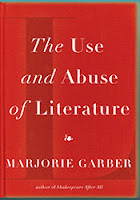I have just about sorted through all my misgivings about
Brianna Karp’s memoir, The Girl’s Guide
to Homelessness, but I am still not entirely sure how I feel about the book. So, perhaps, it is best to start at the
beginning – with the book’s title. While
it is true that the author may have met the “technical” definition of
homelessness for a good portion of the book, I am not convinced that she ever
met the “spirit” of that definition.
According to Karp, she lost her job and could no longer
afford to lease the “tiny cottage near the beach” in which she had been
living. Consequently, on February 26,
2009, she found herself living in a travel trailer on a California Walmart
parking lot (as part of a tiny community of trailers parked there with the
tacit blessing of the company). She did
have to rely on retail businesses for bathroom facilities until she found a
cheap gym membership that gave her access to the gym’s showers, but Karp had a
private shelter all her own to sleep in each night. Too, it appears that Karp was unsure enough
about calling herself “homeless” that she decided to include a rather
definitive definition of the word at the beginning of the book. Two portions of that definition can probably
be stretched far enough to qualify her (italics are mine).
“an
individual who lacks a fixed, regular, and adequate
nighttime residence”
“a public
or private place not designed for, or
ordinarily used as, a regular sleeping accommodation for human beings”
Wisely, Karp held on to her laptop and her cell phone and
turned the closest Starbucks into her daytime home until she found work
again. Unfortunately for her, whatever
work she found was either of the distasteful variety or never paid enough for
her to make much headway in saving the amount of money needed to move to
permanent housing. She was faced with some
hard choices – and she did not always choose wisely. To Karp’s credit, she did reluctantly find a
new home for her large dog after realizing that leaving him cooped up in a
small, hot trailer all day while she was out was both cruel and dangerous.
That was smart. Not
so smart, was the way she handled her relationship with a British homeless
advocate she met on the internet. After
the two grew close, Karp used most of her precious savings to fly him to
California to make sure that they were as compatible in person as they were
virtually. She even paid for a second
round trip after the man had to return to Scotland to deal with the birth of
his illegitimate child there. She bought
him a netbook – and she bought herself a roundtrip ticket to Scotland to
surprise him at Christmas. But she was
still “homeless.”
Much of The Girl’s
Guide to Homelessness covers the dysfunctional, fourth generation Jehovah’s
Witnesses family in which Karp grew up; the suicide of her abusive father; and her
continuing, poor relationship with her mother and sister. And the longest section of the book deals
with her romance with her British lover and its unsurprising culmination, so, despite
its title, this is hardly a book about homelessness.
 |
| Brianna Karp |
I include the following quote because it makes me question
the overall accuracy of Karp’s presentation of her life. It is something she supposedly said to her
British boyfriend when he complained about the quality of television news programming
in the United States:
“Baby, you
can’t watch this. This is Fox News. It’s not real
news. No wonder.” Duh. I grabbed the remote from his hand before he
could hurl it at Nancy Grace’s monologuing
face. “How about we try a little
CNN? That should be more to your taste.”
Since Nancy Grace has long been a mainstay of CNN’s Headline News channel, I have to
wonder if Karp was as careless with the rest of the “truth” in her book as she
was with this gratuitous attack on Fox.
She and her Harlequin editors, in their apparent zeal to take their shot
at Fox News, twist the real picture to suit their purposes (or could they
really be that clueless?) – making me wonder what else in the book may have
been distorted.
I’m rating the The Girl’s
Guide to Homelessness at three stars because it makes for interesting
reading. I only wish I were more
confident that it all really happened this way.
Rated at: 3.0

























